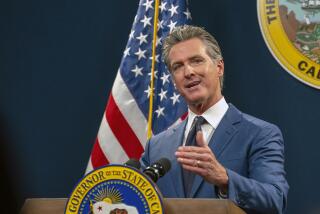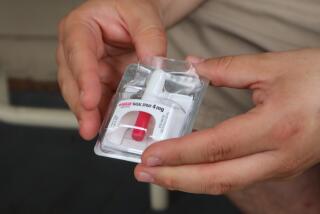Light the way
LIKE BLANCHE DUBOIS, Assemblyman Lloyd Levine can’t stand a naked lightbulb. At least the incandescent type: A bill introduced last month by the Democrat from Van Nuys would ban their sale in California starting in 2012.
Levine is not the first politician to propose banning the bulb, the latest environmental villain in an era when consumers and governments are scrambling for painless ways to conserve energy. The incandescent bulb, the kind most of us have in our bedrooms, is a 19th century technology and a dinosaur compared to the modern fluorescent bulb, which uses three to four times less energy.
If all Americans used fluorescent bulbs, they would save $18 billion a year in electricity. The Lighting Efficiency Coalition, a band of industrialists, environmentalists and scientists, on Wednesday launched a nationwide campaign for a government crackdown on wasteful lighting.
Several cities and utilities already have programs to encourage residents to switch to “greener” bulbs, including Southern California Edison, which funded rebates for about 6 million fluorescents last year. Outside the U.S., governments are starting to give the green light to bulb efficiency projects. Australia is seeking to ban incandescent bulbs within the next two to three years. And when it comes to government mandates, you can’t beat countries such as Cuba and Venezuela, where the state hands out green bulbs to every home. (In Cuba, government workers actually come to your door and switch your bulbs -- whether you want them or not.)
Encouraging people to switch makes sense. Though fluorescent bulbs are more expensive, they more than make up for the added cost through lower electricity bills and longer life, so they don’t impose a burden on consumers. But bans such as Levine’s aren’t necessarily good public policy. (Insert politicians-and-lightbulb joke here.) A ban focuses on a particular technology rather than a broader energy goal.
Officials of General Electric Co. say they are working on a more energy-efficient incandescent bulb. By the time Levine’s proposed ban would go into effect in 2012, they say, they expect to have one on the market that would be just as green as fluorescents. A ban on incandescent bulbs would simply discourage such innovation and limit consumer choice. A better plan would be to set a certain energy-efficiency target that all bulbs must meet by a certain date, and let the marketplace figure out the best way to meet the goal.
Levine says he is open to amending his bill to consider new technologies. Here’s hoping he sees the light.


